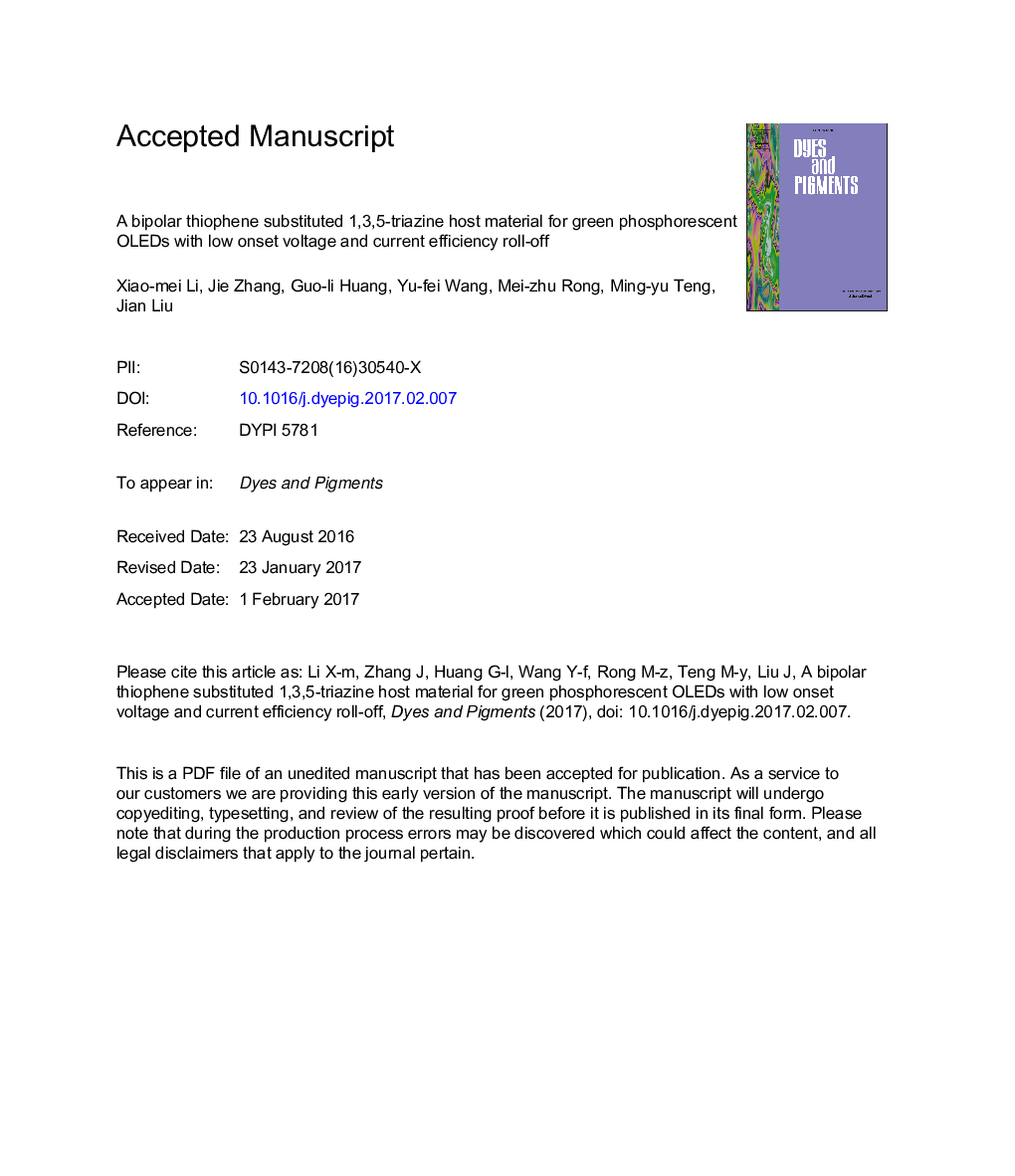| Article ID | Journal | Published Year | Pages | File Type |
|---|---|---|---|---|
| 4765921 | Dyes and Pigments | 2017 | 19 Pages |
Abstract
A novel bipolar host material containing 1,3,5-triazine, thiophene and triphenylamine moieties, 4,4â²-(6-(thiophen-2-yl)-1,3,5-triazine-2,4-diyl)bis(N,N-diphenylaniline) (TTT), was used as a host for three IrIII complexes in fabricating high efficiency phosphorescent organic light emitting diodes (OLEDs) with low driving voltage. The onset voltages of these three OLEDs having the configuration ITO (indium tin oxides)/TAPC (1,1-bis[4-[N,N-di(p-tolyl)amino]phenyl]cyclohexane, 60 nm)/TTT: IrIII complex (92:8, 30 nm)/TPBi (2,2â²,2â³-(1,3,5-benzinetriyl)-tris(1-phenyl-1-H-benzimidazole, 90 nm)/LiF (1 nm)/Al (100 nm), are between 2.9 V and 3.0 V, which is about 0.5 V less than the onset voltages of similar structural OLEDs with mCP as the host material. Maximum current and power efficiencies are more than 30.0 cd Aâ1 and 15.0 lm Wâ1, respectively, with no significant current efficiency roll-off. All the devices exhibit high efficiency at the high brightness of 10,000 cd mâ2. The small roll-off is due to the improved charge balance and the wide charge recombination zone in the emissive layer of these devices.
Keywords
Related Topics
Physical Sciences and Engineering
Chemical Engineering
Chemical Engineering (General)
Authors
Xiao-mei Li, Jie Zhang, Guo-li Huang, Yu-fei Wang, Mei-zhu Rong, Ming-yu Teng, Jian Liu,
